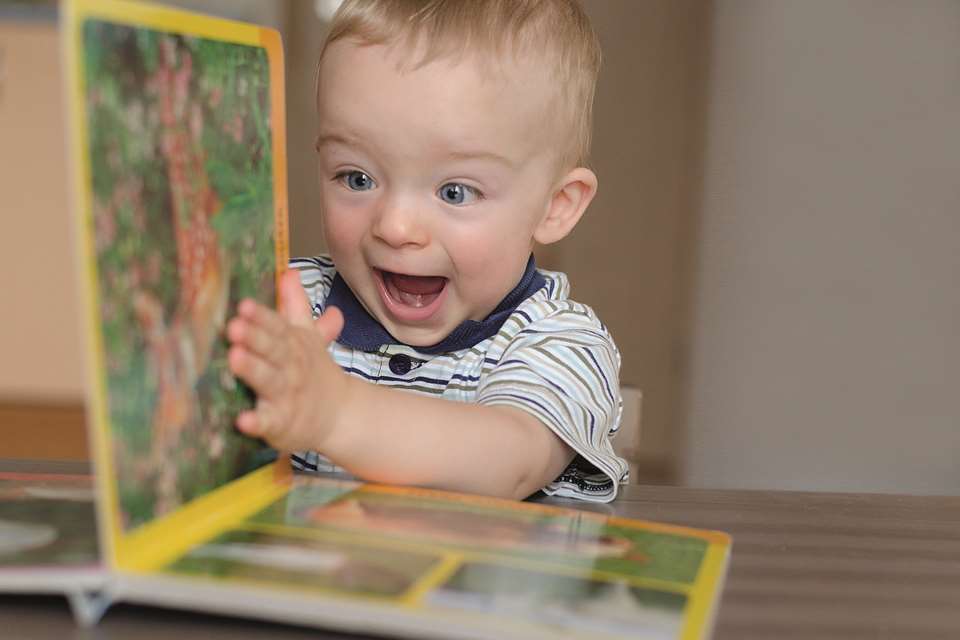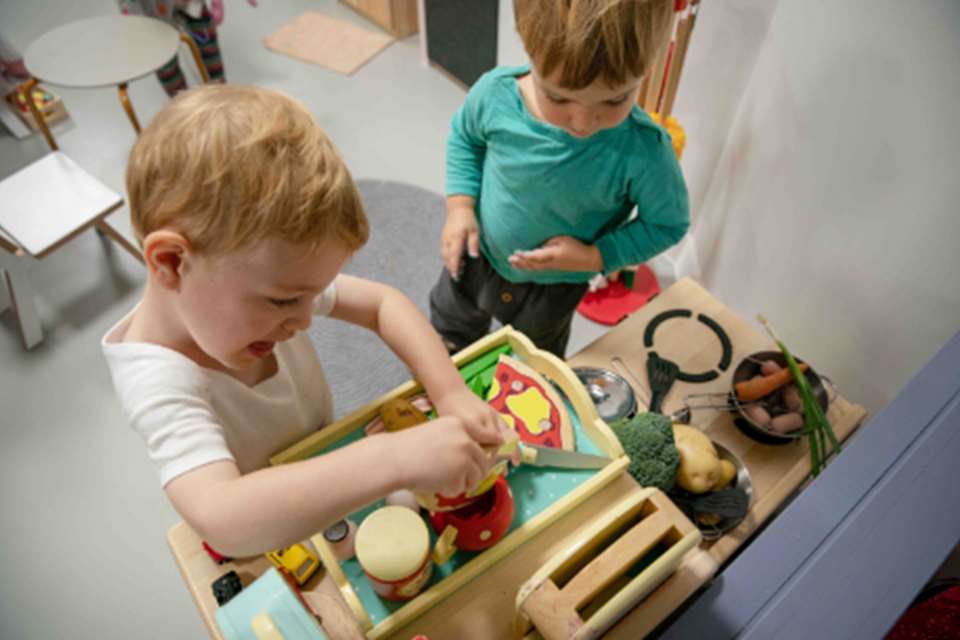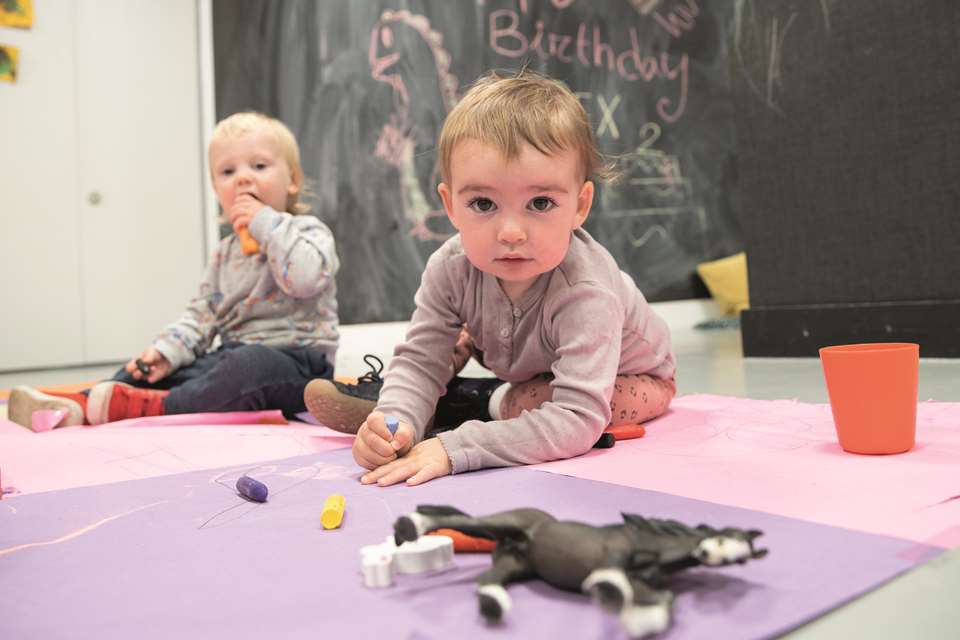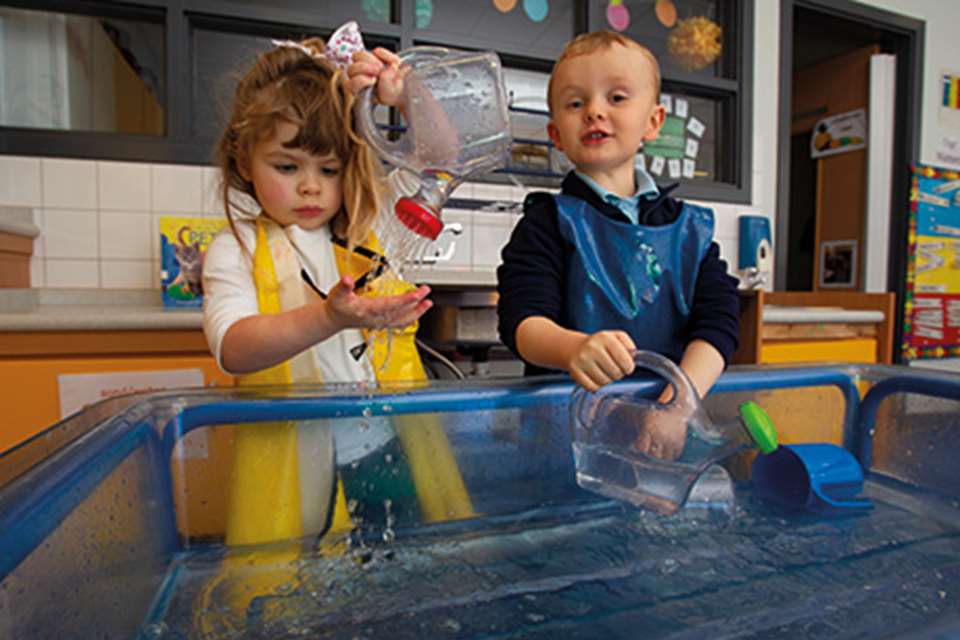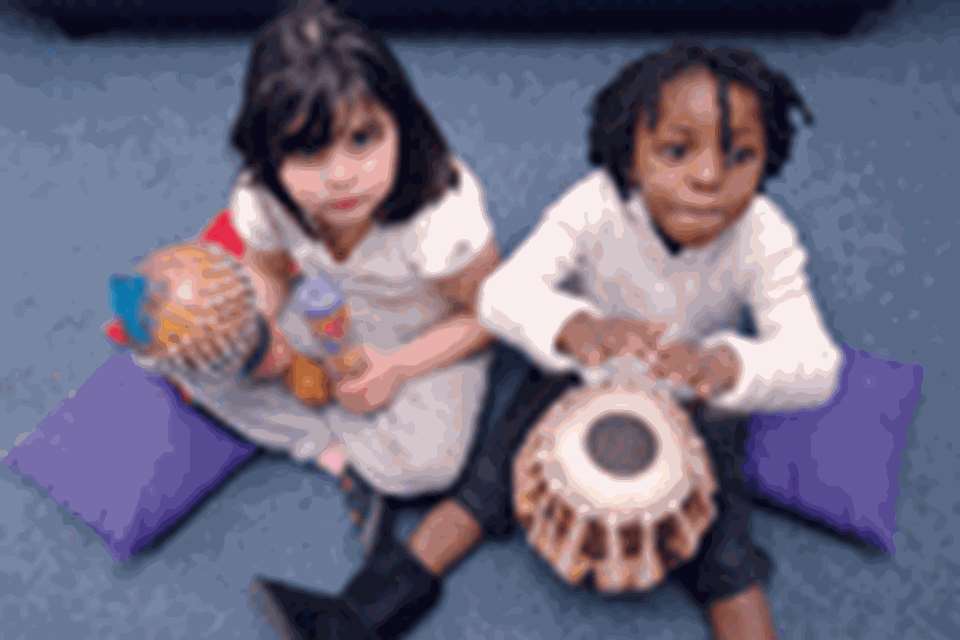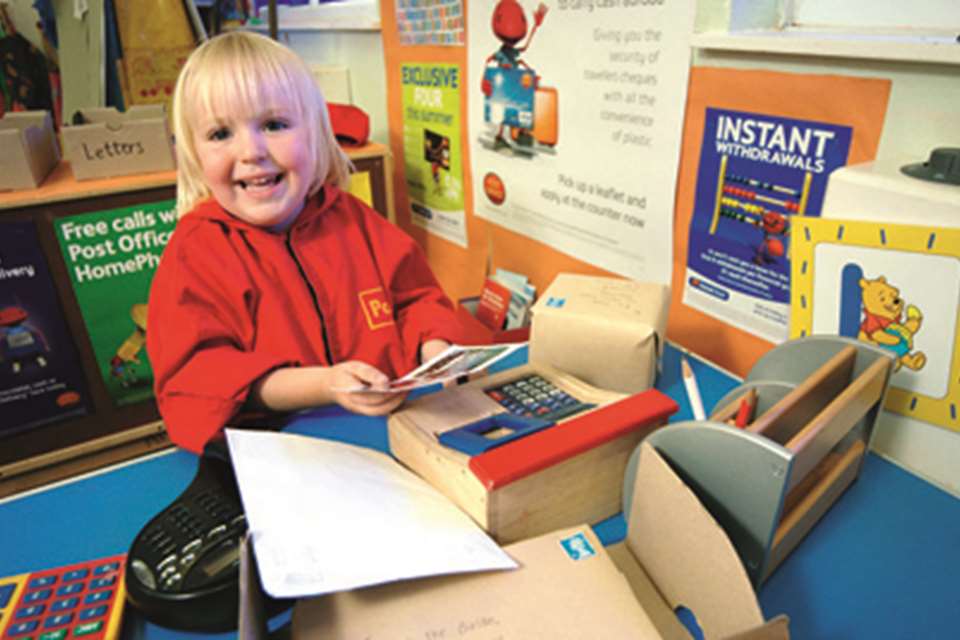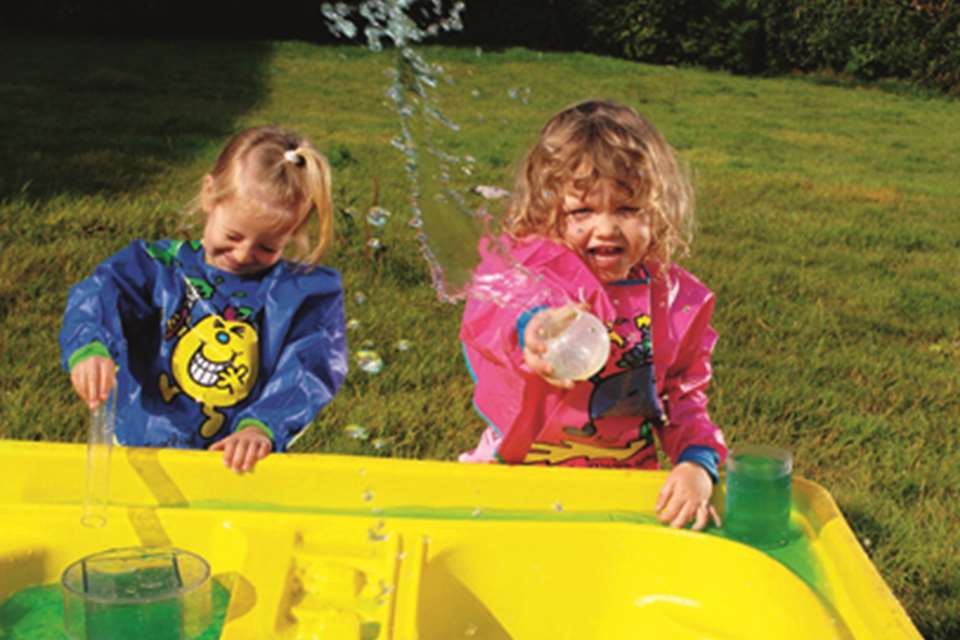Around the Nursery, Part 4 - Pressing needs
Penny Tassoni
Monday, December 9, 2019
Dough and other malleable materials have a role to play across the early years curriculum, explains Penny Tassoni
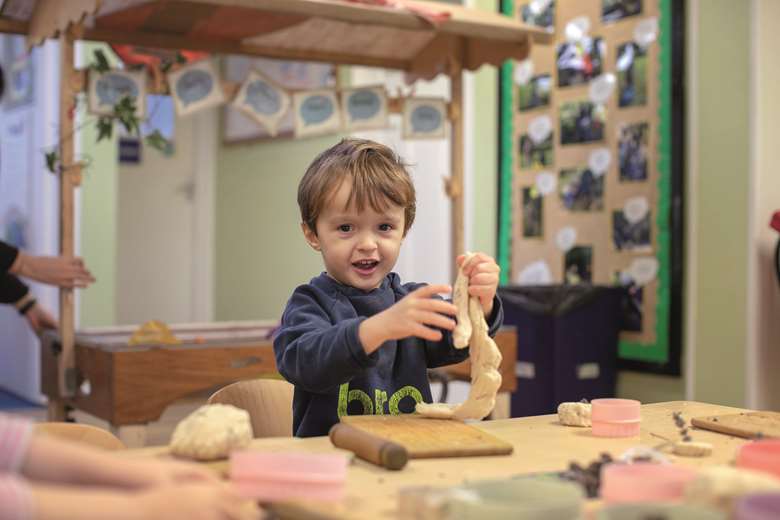
Malleable materials such as plasticine, modelling clay and especially dough are a staple of early years settings. They are great materials, but unless adults plan and resource this area carefully, there can be a danger of stagnated play.
PLENTY OF OPTIONS
While the default material in many settings is the cooked dough that can keep for weeks, a quick trawl of books and the internet reveals a huge choice. With every dough that a child touches, they are able to explore its different properties, and in some cases its smell. So, it is worth planning to provide a variety, and here are some examples of the many types on offer:
- simple stretchy dough (self-raising flour and coloured water)
- porridge dough (oats, flour and water)
- cloud dough (baby oil and flour)
- sandy dough (traditional cooked dough with sand added)
- lavender or herbal dough (fresh herbs added in, or oils)
- salt dough for making decorations and models (flour, salt and water)
- gluten-free dough (see www.coeliac.org.uk/playdough).
As well as the many dough recipes out there, look out also for air-dry clay, plasticine and ‘real’ clay.
BENEFITS
Malleable materials can be used to explore many areas of learning and development. There is a natural fit with Expressive Arts and Design, as children are exploring media and materials while also creating their own representations and products. Children have opportunities to experience early science, as well as mathematics, if they are involved in making dough. They can also explore different types of bread and how these are made. In addition, there are strong links to the Prime areas of learning.
Personal, social and emotional development
Malleable materials are sensory and tactile, which make them very comforting for children. Squashing, poking and squeezing these materials can give children opportunities to express strong emotions and feel empowered.
Malleable materials and tools are usually presented in ways that require children to be co-operative and share. This type of play is also ideal for bringing children of different ages together, as every child can play in their own way while being alongside others.
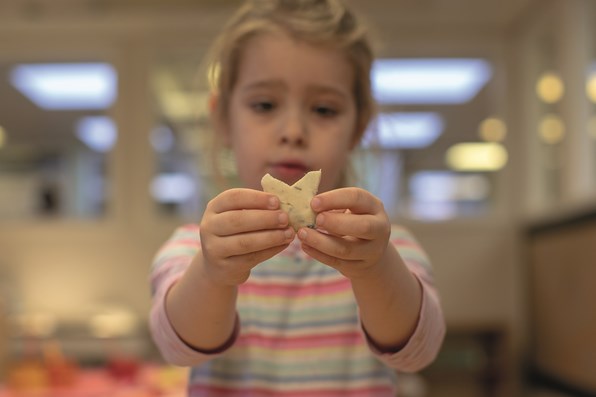
Language development
With adult support, children can learn vocabulary about texture and shape, as well as the names of tools. The relaxing nature of playing with malleable materials means children often talk freely, and in adult-guided activities, such as making a dough or a simple bowl, children can learn to follow instructions, as well as asking questions.
Physical development
Playing with malleable materials can develop many fine manipulative skills. Children’s hands can be strengthened by squeezing dough, while hand-eye co-ordination is developed as children manipulate it using tools. Consider also whether programmes such as Dough Gym or the popular ‘dough disco’ on YouTube would be of interest for the children you work with. See, for example, www.youtube.com/watch?v=zJQ2CaA7E50.
EXPLORING MATERIALS
How children engage with materials depends partly on their age, but also on their experience of using different materials.
Exploration
Exploration is an important element of using malleable materials. Toddlers and young children who are new to dough and other such materials may at first be perfectly happy to use their hands to see what they can do. Older children presented with a new malleable material also need to explore it first in order to understand its properties.
We may see children engaged in a variety of actions, including stretching, rolling and poking the material, and tearing it apart. Children may also be interested in squashing it into a variety of containers. You can support this play by providing the children with more than one type of malleable material, so that they can explore the similarities and differences between them.
Children may also want to explore a range of different tools, including scissors. While some children may work out how best to use these tools, other children can learn from adults modelling their use or showing them directly how they are used.
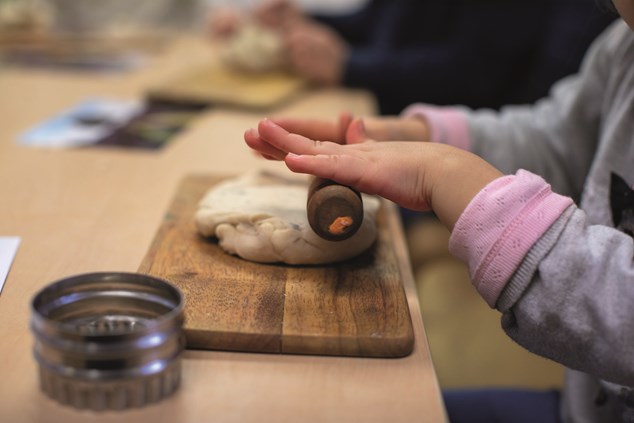
To support children’s explorations, aim to provide:
- scissors, ensuring they are sufficiently robust to cut dough
- a range of cutters, including ones with wheels
- a range of extruders (that is, gadgets that squeeze out dough)
- containers of different shapes and sizes.
- Rolling, cutting and pressing
Most malleable materials can be rolled and cut. At first, children may flatten dough using their hands, but may move onto using a tool, such as a rolling pin or bottle. Children often enjoy using cutters and pressing objects into their flattened dough or clay. Aim to provide the following resources:
- rolling pins of varying sizes, including ones that adults use, and cylinders, such as bottles
- leaves, twigs and pebbles
- a range of cookie cutters and other objects that can cut dough, such as upturned beakers
- items that will leave a pattern or mark when pressed into the dough, such as lace, textured cardboard or plastic
- jelly and silicone moulds that have a pattern
- pipe cleaners, sequins and gems that can be pressed into dough
- fridge magnets that create a reversed pattern.
- Modelling
As children become familiar with the material, they can use malleable materials for modelling. Children might make cakes, pizzas or sausages. Older children may attempt creating faces, animals and things, such as a snowman.
Constructing
Some malleable materials, such as modelling clay, can be used by older children to create simple objects such as bowls and open boxes. To help children achieve what they have set out to do, adults may need to show them how to join pieces of clay, so that these do not split apart or fall off during the drying process.
Role play
Many children from around three years enjoy using malleable materials to enhance their role play. This is why dough and similar materials often find their way into the home corner. To support this, try to position your home corner and malleable materials area together, or duplicate your malleable materials in the home corner.
It is also worth making sure the children have access to the props they may need. For example, for children who want to ‘bake’, provide:
- baking sheets and tins
- cupcake cases and a variety of cooking containers
- flour and sugar shakers, salt and pepper pots
- cookery books or photographs of cakes, breads and pizzas
- an oven (could be a cardboard box turned on its side)
- oven gloves, apron and a rack.
Some children might want to expand into takeaways, so you could set up a malleable material pizza station outdoors for easy deliveries.
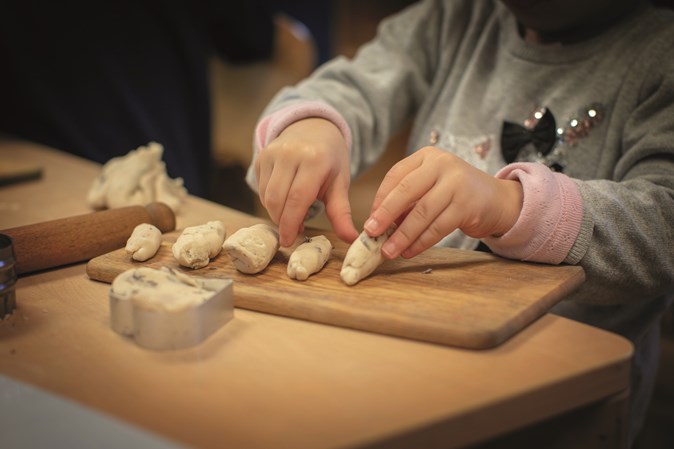
Small-world play
Some children might use malleable materials with small-world play resources. Toddlers and young children commonly enjoy pretending to feed animals, but older children may use malleable materials to create landscapes and even models to complement their play. It is, therefore, worth sometimes providing malleable materials alongside small-world resources or asking the children during their play if the materials would be useful.
THE ADULT ROLE
To ensure that malleable materials remain challenging and enjoyable for children, adults need to:
Play alongside children
Joining children as they play is an important way in which to help them find new possibilities in their explorations, and to develop their language. Chatting to children is a skill. As malleable materials are tactile and relaxing, children may, during conversations, talk about their feelings and their home lives.
Children enjoy being with adults who follow their lead, so it is worth watching what they are doing and then joining in before looking for possibilities to extend their play.
Plan guided activities
To extend children’s interest in using malleable materials, and promote learning across the EYFS curriculum, adults need to guide children through planned activities. For example, show the children a mosaic or hanging ornament to see if they are interested in creating one using air-dry clay.
You could also plan adult-guided activities to teach children how to use particular tools or techniques. Three-year-olds might learn to hold and use scissors properly by playing a snipping game with strips of dough. Adult-guided activities might also include inviting a potter or artist into the setting to show children how to use clay.
Observation
It is worth looking at what children are doing when they are using malleable materials, as well as how engaged and focused they are. In some cases, adults need to provide additional resources so that children can explore the materials further or achieve their aims. Reflecting on why children might leave the malleable materials without engaging is important too:
Could it be that they cannot see any new play possibilities?
Are they frustrated because they cannot achieve what they had hoped?
Did they need additional adult support, or was the style of adult support offputting?
MATHEMATICS
For children to acquire and understand mathematical concepts, they need adults to draw their attention to the maths that is occurring in their play. How well adults are doing this is a focus in the new Ofsted inspection framework.
There are a few things children seem to enjoy doing with malleable materials that we can use as a starting point when planning adult-guided activities. By basing games on things children enjoy doing, there is a good chance they may start to repeat and build on these activities in their own play.
Length and weight
Provide, for example, some straws and spatulas and see if the children can roll their dough into pieces that are longer, shorter or the same length as the resources provided. Put out measuring tapes so the children can measure how long their piece of dough is.
Play games where children have to match or produce a longer piece of dough than the one you have made. Put out some weighing scales to see if children can guess which piece of dough is the heaviest.
Number
Games with dice can help children learn about number. For example, play a game decorating a cake or ball of dough. Give each child a pot with an equal number of pebbles, gems or sticks in it. When they roll the dice, they decorate the cake with the number of items that corresponds to that shown on the dice. The game ends when a child has emptied their pot.
Hide and seek
Some children like burying items within dough. This could be extended into a game of hide and seek: hide some buttons, small shells or other small items in dough and challenge the children to find them. Children can then count their finds or group them by characteristics – for example, separating large red buttons from smaller blue ones.
LITERACY
With a little thought, it is possible to incorporate opportunities for literacy into children’s play with malleable materials. For example, provide menus or pizza adverts, or create a simple ‘recipe’ book setting out how children can make their own uncooked dough.
If children have been using malleable materials for modelling, they can create captions independently or with the support of adults who may scribe for them.
EVALUATING
The key terms Ofsted considers when assessing quality of education are Intention, Implementation and Impact. Here are some questions to help you reflect on how you are using malleable materials to support children’s learning and development:
Intention
- Why have you chosen the malleable materials and resources that you provide in this area of provision?
- Do you have a plan to introduce children to a range of malleable materials?
- What skills and knowledge are you hoping to support through this play?
- How are you using this area of provision to develop children’s mathematical thinking and support the development of mathematical concepts?
- How does this area provide opportunities for literacy?
- Implementation
Are adults:
- offering resources that are age- and stage-appropriate?
- providing sufficient resources that are of interest to children?
- helping children to learn how to use tools and techniques associated with malleable materials?
- interacting with children in ways that support sustained shared thinking?
- drawing children’s attention to the mathematical possibilities that may occur during play with malleable materials?
- looking for opportunities to develop children’s early mark-making and writing or to draw their attention to print?
Impact
Are children:
- engaged and engrossed when using malleable materials?
- showing that they know how to use tools appropriate to their age and stage of development?
- showing specific knowledge and vocabulary as a result of playing with malleable materials?
- developing their own play and ideas after having experienced adult interactions/adult-guided activities?
Part 5, on the book area, will be published on 20 January 2020
Download Now

